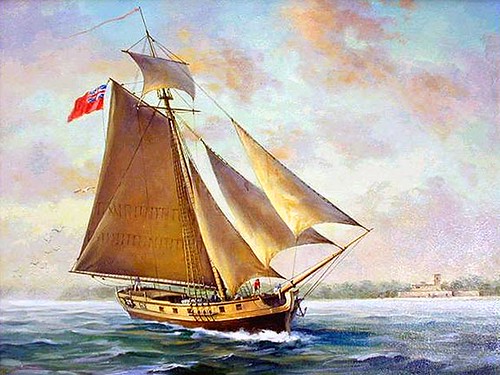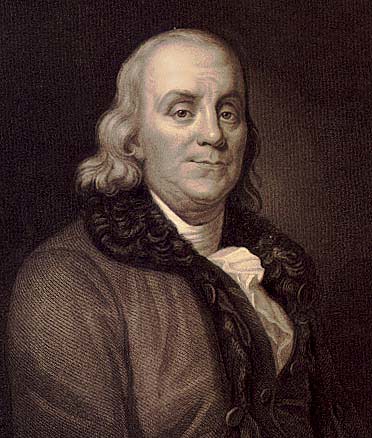The following is written on a New England Lighthouse web site. http://lighthouse.cc/boston/history.html History – page one
Boston lighthouse) holds a place of honor among our nation’s beacons.
This was the first light station established on the North American continent, and the last in the United States to be automated. It’s also our only light station that still retains an official keeper.
Because Boston Light was destroyed in the Revolution and rebuilt in 1783, the tower itself is the second oldest in the U.S…..It’s recorded that there was a beacon on Point Allerton in Hull as early as 1673.
Sorry, in St. Augustine we scoff (in a friendly way) at 1673. Heck, we were a 108 by then. Maybe they got the idea for the 1673 lit watch tower from St. Augustine? Yes, Boston is important, and claiming first American lighthouse is significant. But claming first “North American” watchtower is a different thing all together.
An exciting point from this excerpt about Boston is the report that fires burned in towers very early on at Hull. This happened before they were designated “lighthouses.” What does that mean? Is it important in some way? Let’s explore it a bit more.
Consider this quote from Puertos del Estado, a Spanish web site discussing Spain’s port system. The quote below has been translated into English, See the original at: http://www.puertos.es/es/index.html
The origins of the visual aids to navigation date back to the humans’ first attempts to discover new commercial routes, going far a way from the coast in their vessels. In the daytime, the geographical unevenness oriented these men. However, at night, they needed to use the light emitted by bonfires burning in strategic coastal points in order to come back to the port. Since the rain or the wind extinguished these bonfires, they were protected with a kind of structure…Thus, the lighthouses started….
After the fall of the Roman Empire…countries were focused on the wars more than on the social and economic development. Few new lighthouses were built…Morever, the existing lighthouses were destroyed.
Since the 12th Century, the navigation in the Mediterranean Sea and in North Europe was reactivated. In order to guarantee the safety in the shipping routes, lighthouses were built. Thus, Scandinavia and Germany had the best-lit coast in Europe (15 lighthouses in 1600)…. In addition, bonfires were placed on existing watchtowers such as Porto Pi in Mallorca.
Hmmm? So, according to Spanish historians, Europe used lighthouses formally as early as 1600. More excitingly for us, there is a recorded history in Spain of lighting watchtowers!!!
I believe the question is not “How early was there a lighthouse?” But rather, “When did economic activity and coastal defense call for maritime aids to navigation? It is at this point that we begin to discover when the “port” became a “port” and not just a ship’s landing site.”

Remember ships’ traffic is critical in the Age of Discovery. There were not yet road, or rails, factories or farms. Things that people needed, like axes, tools, iron bar stock, money to pay the army or trade goods came by sea. The enemy came by sea too. They arrived to sack and burn. The sight of a sail on the horizon must have met with fluttering hearts. Colonization was not for sissys. Watchtowers were set up and signal systems were established. The idea was to let the good guys into port and keep the bad guys out.
As early as 1586 the first watchtowers were evidenced in Spanish, St. Augustine coast line. Sir Francis Drake came along “saw a place built like a Beacon” and sacked our town.
Were these early watchtowers lighted? Well, to begin to understand if they would have been lighted, we need to understand the significance our our port, WELL BEFORE 1824, when the American’s first light their first Florida Lighthouse. Well before that happened, an old Spanish Watchtower had stood on this North American Site. We know it had a keeper’s dwelling, and we know that the Governments who ran it were formally organized with lighthouse agencies. How do we know? We have maps that have long been studied. But we also have evidence in the writings of great men and women who interacted with the sea.
Let’s go back to Boston for a minute. The American Philosophical Society
and Yale University, Digital Edition by The Packard Humanities Institute, publishes the papers of one well know Bostonian who spent some time traveling by sea. His name was Benjamin Franklin. See his writings at www.franklinpapers.org.

Around 1757, Franklin writes of being aboard a ship to London, almost wrecking on the rocks as the Ship neared the city, and being saved by the light from a British lighthouse. Franklin is frightened and rather impressed with the “utility” of lighthouses. He resolves to encourage building more of them in America if in fact he survives the journey. (Yale University, www.franklinpapers.org. Autobiography, Part 18.)
At the time of some of Frankln’s his writings, in “North America” there is a British Colony at St. Augustine. The first act of the British goverment was to improve and heighten the lighthouse. Why heighten a lighthouse/watchtower? . Normally, this allows a light to be seen further.
Who was in command of British forces in North America. General Gage, the same General who commanded the American troups at Lexington and Concord, sent a ship called Industry to supply the new colony. We know that the Industry sank here, (See our others blogs). We know Gage sent Cannon to St. Augustine. Whom do you supppose he planned to fire upon? You can see both a advertisment for the sail of the Ship Industry, at that time taking passengers and bound for Barbados, in Franklin’s Gazette. You can also read that Franklin considers Gage universally “despised” in Boston due to his “perfidy. ” (www. franklinpapers.org). Did I mention that Franklin writes about the “port” of St. Augustine several times. He writes that the post is regular from here, coming by ship once a week to Boston.
If the post (mail) is regular and travels by sea, then is there an aids to navigation system? What do you think?
We have accepted a watch tower was here in St. Augustine in the 16th century. We accept that someone watched from it. We know that prior to the American Revolution people like Benjamin Franklin discuss activity to and from the port of St. Augustine. We know that since 1600 and before Europeans have had structured lighthouse systems and lighted watchtowers.
When did we light the watch tower at St. Augustine? Did it become a lighthouse in the British period? We don’t know for sure yet. But evidence is growing about the significance of our port and how the watchtowers and aids to navigation may have contributed to it well before the American’s came along.
I know Sally Snowman, the keeper at Boston Light. I think that the Boston light is a fabulous American landmark and that the USCG does a wonderful job there. I just also believe that we as Americans should also consider that our history is more complex and more multi-cultural than it may appear at first blush. If that is indeed the case, then St. Augustine deserves her share of national recognition, not just because someone landed here, but because over time she served as a port with a growing economy and needs for coastal defense.
I invite your thoughts and comments!
Kathy

